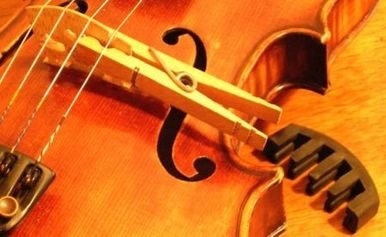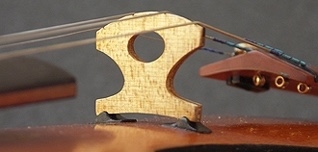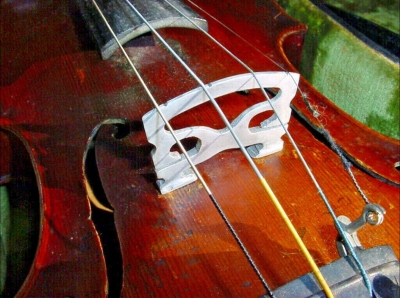Welcome to our forum. A Message To Our New and Prospective Members . Check out our Forum Rules. Lets keep this forum an enjoyable place to visit.
Currently working on errors from the latest (SimplePress) forum update. Many issues have been resoled and others are being worked on. Thank you for your patience.
 Topic RSS
Topic RSS



 (20 votes)
(20 votes)  Offline
Offline
Fiddlerman said
The shape and amount of wood affects the sound substantially IMO.
which is something I've observed. Its hard to find information on what cuts do what or what affects the sound in certain ways. I noticed the bridge on my old violin has a lot detailed cuts and its really interesting seeing the work that was done to it.. compared to my Chinese Ebay violin which is borderline a bridge blank slapped on.
Regulars
 Offline
Offline


Member
 Offline
OfflineI think that what the bridge is made of is as if not more important than the shape of it. Why is there so little experimentation with other bridge materials such as horn, glass or some space age plastic? I would really like to hear from anyone that has actually tried some alternate materials, I am particularly intrigued by a few that I have seen with an extremely hard wood such as ironwood or bone or ivory bonded the top edge of the bridge to be the contact point with the string.
The search for great technique does not always lead to great music, but the search for great music does always lead to great technique.
Regulars
 Offline
Offline

Well @JiminTexas , I have tried a bridge made of ebony and gave out a few to other forum members. Nothing exciting to report there. I have a violin with an ivory insert on the bridge. That one needs repair before I can play it. Carbon fiber has been used with a wood core.
Funny, I have never seen one made out of metal.
Success is the progressive realisation of a worthy ideal. —Earl Nightingale.
Member
 Offline
OfflineIf believe that there would be a lot of interest in doing some experimentation with different bridge configurations and/or materials. I personally would like to see the results of using saddles rather than barefooted bridges. If the purpose of the bridge is to transmit the string vibrations to the top, then it seems to me that maximum transmission should occur when there is maximum contact between the transmitting medium (the bridge) and the part that acts as a diaphragm (the top).
The search for great technique does not always lead to great music, but the search for great music does always lead to great technique.
Regulars
 Offline
Offline

@JiminTexas and others. The physics against the “three legged” bridge was worked out two centuries ago. It turns out that the center line of the violin is a null area for the vibrational nodes of the top plate. So any vibrational energy put in that area goes directly into heat and has no acoustic benefit.
It would be interesting to put the bass bar in the center so that it provides buckling support while removing its mass in a prime vibrational node. That makes a lot of sense to me.
You may also want to look at the “hole in the heart” viola thread. I am purchasing instruments to expand that procedure to fractional violas and fractional cellos.
Success is the progressive realisation of a worthy ideal. —Earl Nightingale.
Regulars
 Offline
Offline

@Fiddlerman . I know of no company making these, so you are on your own. They would be a piece of cake for the firm making your titanium tail pieces. Any work shop with an assortment of machine tools should also be up to the task. I think that aluminum bronze would be a superior material to the assumed aluminum used in this bridge.
Two suggestions to overcome the objection of placing a metal on a wood top plate (although I think that if contact surfaces were matched there should not be a problem). The first is a rocker arrangement shown in post #30 above. The second is the use of wood feet in a standard “adjustable bridge” arrangement.
If found useful in your future experiment, the cheapest method of mass producing the bridge would extrusion, band saw to width, and then tumble to remove sharp edges and burrs.
Success is the progressive realisation of a worthy ideal. —Earl Nightingale.
1 Guest(s)


 Log In
Log In Register
Register


























 your next audition.
your next audition.


 Online
Online



